Creating a beautiful flower bed is one of the most rewarding ways to enhance your outdoor space. Whether you have a sprawling backyard, a small front yard, or even just a narrow patch along a walkway, a well-designed flower bed adds life, texture, and color. The right flower bed ideas can make your home look inviting and elevate the overall aesthetic of your landscape.
In this post, we will explore 10 creative flower bed ideas that are perfect for gardens of all sizes. Each idea offers a different way to combine color, height, and design, helping you bring out the best in your garden while expressing your unique style.
1. Raised Flower Beds for Easy Maintenance
Raised flower beds are a timeless favorite among gardeners. They are practical, visually appealing, and make it easier to maintain plants without constant bending or kneeling. These beds can be built using wood, bricks, stones, or even metal frames depending on your garden style.
One of the biggest advantages of raised beds is improved drainage, which helps prevent waterlogging. You also have better control over the soil composition, making it easier to grow a variety of flowers that thrive in specific conditions.
For a charming look, consider building raised flower beds along walkways or around patios. Plant a mix of annuals and perennials for color all year round. For example, combine tulips, marigolds, lavender, and petunias for a diverse display. You can also border the raised bed with creeping plants like alyssum for a soft, romantic edge.
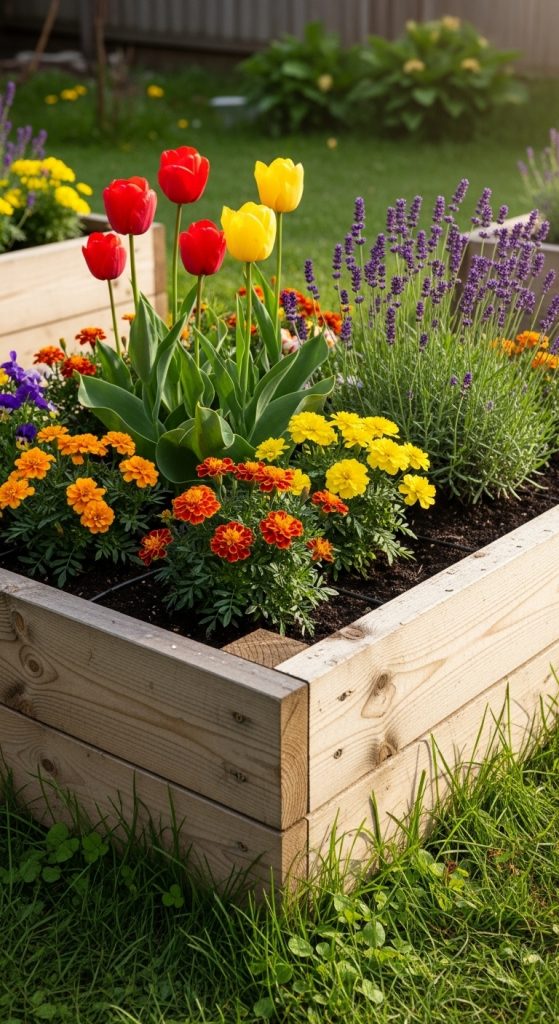
2. Cottage Garden Flower Bed
If you love a natural, carefree look, a cottage-style flower bed is perfect. This idea celebrates abundance, mixing flowers of all shapes, sizes, and colors in an informal arrangement. Think of a garden overflowing with blooms like roses, daisies, foxgloves, and delphiniums.
The secret to a successful cottage flower bed is layering. Start with taller plants at the back, such as hollyhocks or lupines, followed by medium-height plants like coneflowers or daisies, and end with low-growing flowers like pansies or violas at the front.
You can also add herbs like lavender, sage, and thyme to introduce fragrance and attract pollinators. Cottage-style flower beds are ideal for front yards or near garden fences, giving your space a cozy and welcoming charm.

3. Border Flower Beds Along Pathways
Border flower beds are a great way to add color and structure to garden paths, driveways, or walkways. They guide the eye and create a sense of direction while softening hard edges.
For a balanced design, choose plants that complement your pathway material. If you have a stone or gravel path, try pairing it with flowers like catmint, lavender, and salvia. For concrete or brick paths, use bright flowers like geraniums, zinnias, or snapdragons to add contrast.
A mix of heights works beautifully for borders, but avoid plants that grow too tall, as they might overwhelm the path. Low-maintenance choices such as hostas, dianthus, and ornamental grasses make great companions in these areas.
Add solar-powered garden lights along the border for a magical glow during the evening hours, making your pathway both practical and enchanting.
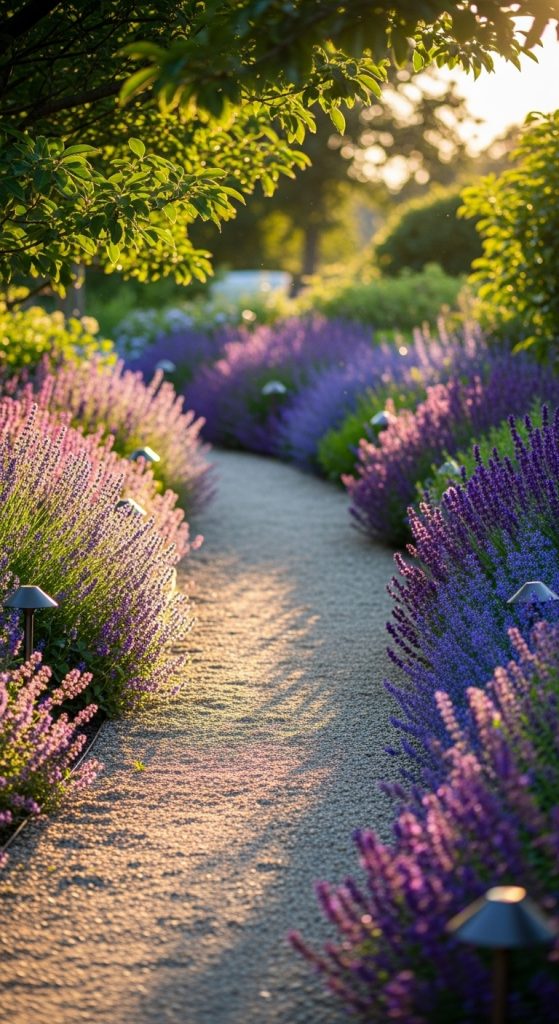
4. Circular Flower Bed in the Center of the Lawn
A circular flower bed serves as a stunning focal point for your lawn. Whether it’s in the front or back yard, this style instantly adds elegance and symmetry.
To design a circular flower bed, start with a central plant or feature, such as a small ornamental tree, birdbath, or garden sculpture. Surround it with flowers arranged in layers or rings. For instance, plant tall flowers like sunflowers or lilies in the center, medium-height flowers like dahlias or zinnias in the middle, and low-spreading blooms like alyssum or pansies along the outer edge.
You can even experiment with color themes, such as all-white flowers for a sophisticated look or a rainbow of colors for a cheerful vibe. Circular beds are especially striking when placed in open spaces, where their symmetry can truly shine.

5. Rock Garden Flower Bed
If you love a natural and rugged aesthetic, a rock garden flower bed might be your ideal choice. This design blends flowers with stones and gravel, creating a balanced mix of textures that looks effortlessly elegant.
Rock flower beds work beautifully on slopes or uneven ground. Choose plants that thrive in well-drained soil, such as succulents, sedums, and alpine flowers. Complement them with hardy perennials like daylilies or irises.
Arrange rocks in a layered formation to mimic a natural hillside. Leave gaps between rocks for planting and use mulch or gravel to keep weeds at bay. This low-maintenance option is perfect for those who want a garden that looks beautiful year-round without requiring much upkeep.

6. Edible Flower Bed
For a functional yet gorgeous flower bed, try mixing edible plants with ornamental flowers. This not only creates a unique visual appeal but also allows you to enjoy fresh herbs and blossoms for culinary use.
Edible flowers such as nasturtiums, calendulas, violets, and borage can add color to your beds while being completely safe to eat. Combine them with herbs like basil, chives, and mint for a fragrant and useful mix.
Arrange your edible flower bed near the kitchen or patio for easy access. Use raised wooden boxes or ceramic planters for a tidy look. This type of flower bed is both practical and eco-friendly, promoting a sustainable approach to gardening.
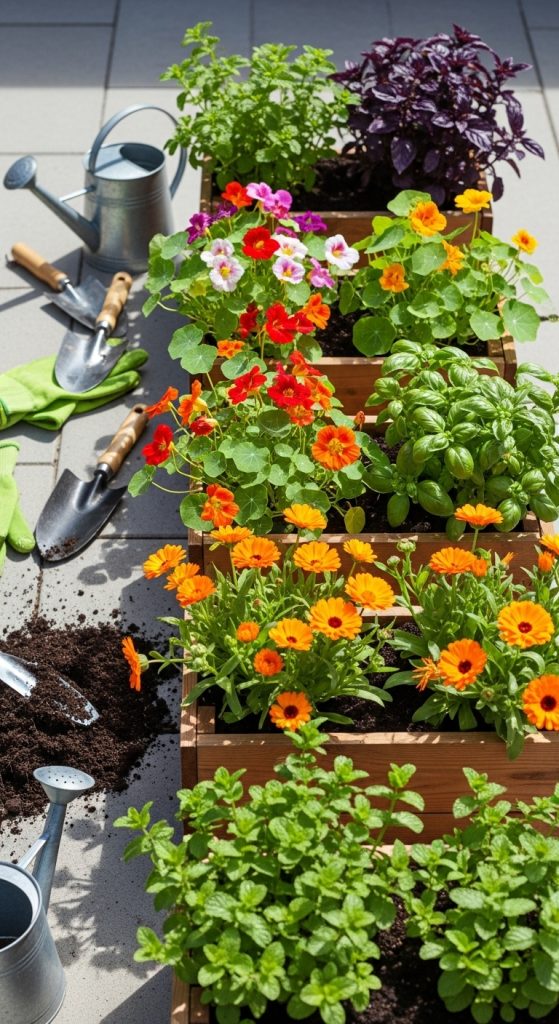
7. Shade-Loving Flower Bed
Not every part of your yard gets full sunlight, but that doesn’t mean you can’t have a beautiful flower bed in shaded areas. Shade-loving plants can turn those dim corners into lush green sanctuaries.
Start with plants that thrive in partial or full shade, such as hostas, ferns, astilbes, and impatiens. Combine different shades of green foliage with occasional pops of color from begonias or coleus.
Adding decorative elements like stones, wooden borders, or a small garden bench can make the space feel inviting. Shade flower beds are ideal for the sides of houses, under trees, or along fences where sunlight is limited.
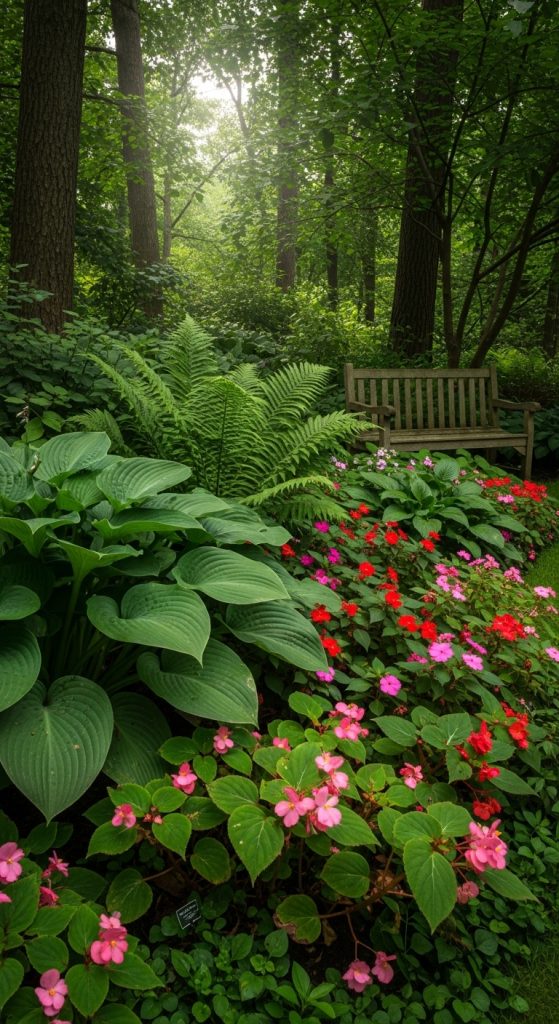
8. Wildflower Meadow Bed
For a low-maintenance and eco-friendly option, consider a wildflower-style flower bed. This approach encourages biodiversity by attracting bees, butterflies, and birds to your garden.
To create a wildflower bed, choose a mix of native plants that suit your local climate. Popular choices include black-eyed Susans, cornflowers, poppies, and coneflowers. Scatter the seeds randomly across the bed for a natural, free-flowing look.
Unlike traditional manicured beds, wildflower gardens embrace imperfection. They require minimal watering and fertilizing once established, making them perfect for gardeners who prefer a relaxed and nature-inspired style.
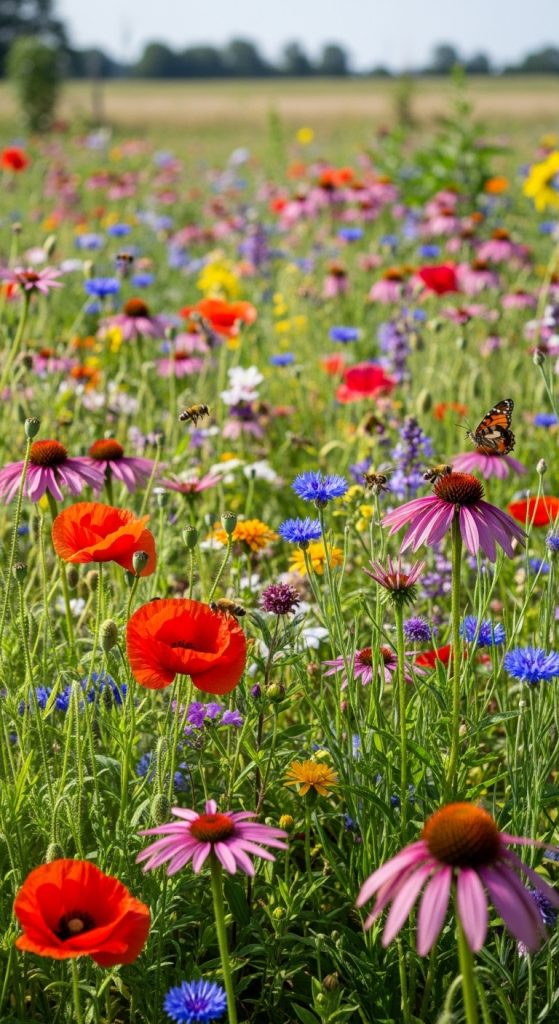
9. Seasonal Flower Bed
If you love to see new colors every few months, a seasonal flower bed is a fantastic idea. You can plan your garden in sections that change with the seasons to ensure year-round interest.
In spring, plant tulips, daffodils, and hyacinths for early blooms. Summer can showcase petunias, marigolds, and zinnias. As autumn arrives, chrysanthemums and asters can take center stage. Even in winter, evergreen plants and ornamental cabbages can add texture and color.
To make transitions easier, plant bulbs in layers and add perennials that bloom at different times. Rotating plants seasonally keeps your garden vibrant and always evolving, making it a favorite for those who love variety.
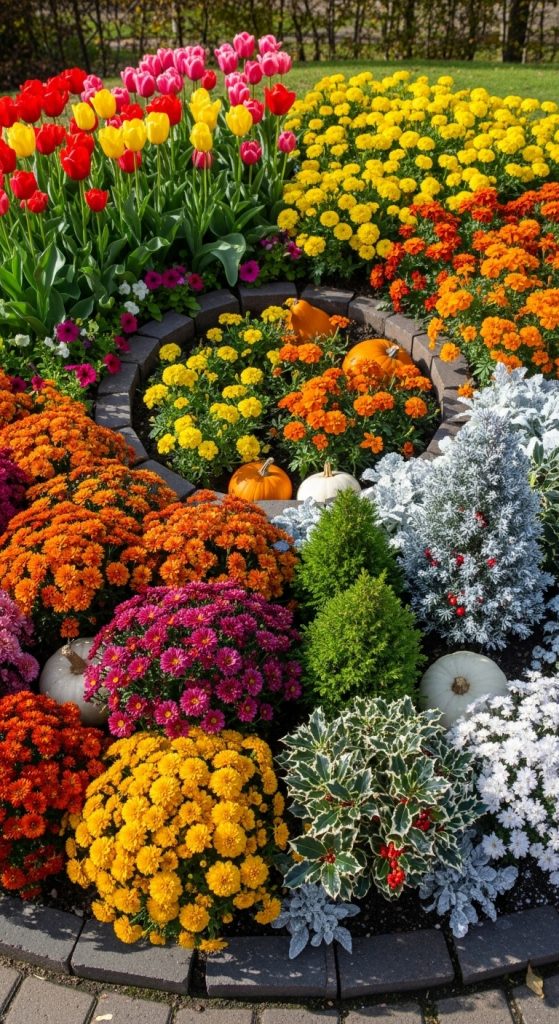
10. Container Flower Beds for Small Spaces
If you have limited garden space or live in an apartment, container flower beds are a wonderful solution. By using pots, troughs, or even repurposed items like old barrels or crates, you can create portable flower beds that bring color to patios, balconies, or entryways.
Mix different container sizes and shapes for visual interest. Combine trailing flowers like ivy geraniums with upright plants such as salvias or ornamental grasses. Group them in clusters or arrange them in layers for a lush, full look.
Container beds are also perfect for experimenting with color themes or seasonal arrangements. Plus, they can be easily moved to adjust sunlight exposure or to refresh your outdoor décor whenever you like.
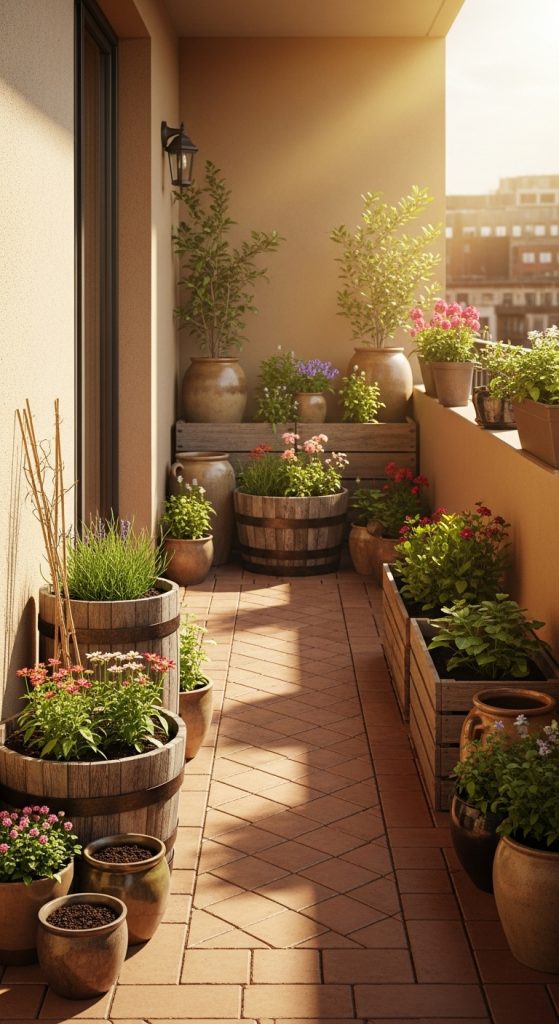
Tips for Designing the Perfect Flower Bed
No matter which style you choose, a few essential tips can help you make the most of your flower bed design:
- Plan Your Layout: Before planting, sketch your design on paper. Consider sunlight exposure, soil type, and the height of each plant.
- Mix Colors and Textures: Combine contrasting shapes and hues for visual appeal. Pair bold flowers with soft foliage for balance.
- Use Mulch: Mulch not only retains moisture but also prevents weeds and gives the bed a neat finish.
- Incorporate Edging: Define your flower bed with edging materials like stones, bricks, or metal borders to create clean lines.
- Add Decorative Features: Birdbaths, lanterns, or small statues can enhance the personality of your flower bed.
- Think Year-Round: Combine perennials and annuals to ensure continuous blooms throughout the year.
Conclusion
Flower beds are more than just garden decorations; they are expressions of creativity and personal style. From raised and circular designs to cottage gardens and wildflower meadows, there are endless ways to create a flower bed that complements your home and personality.
Whether you prefer neatly organized layouts or free-flowing natural designs, the key is to choose plants and styles that reflect your taste and fit your environment. With the right planning and a touch of imagination, your garden can become a stunning retreat filled with color and life.
Try one or more of these 10 flower bed ideas to give your outdoor space a fresh, vibrant look. No matter your skill level, these ideas can inspire you to create a garden that blooms beautifully year after year.
